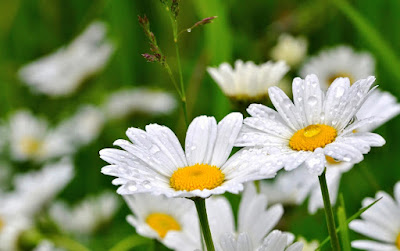The daisy is actually an herb which symbolizes stability, innocence, cheerfulness and sympathy. White daisy is the most common one but they also can be found in yellow, purple and red, along with various shades in between. The flowers open at dawn and are visited by many insects. It tends to spread as it grows and blooms repeatedly from the summer into the fall. A daisy is generally 2 to 3 centimeter in diameter from petal to petal and stands 2 to 10 cm high. It is difficult to find them as tall as 15 cm. Daisy is a native of eastern, western and central Europe. During mowing daisy flowers do not disappear which makes many people consider them a weed and therefore treat them as such with weed killers.
The name daisy is believed to come from the phrase 'day's eye' because of how these flowers open when the sun comes up and close at night when the sun is down. The common daisy has the scientific name of bellis perennis. That is the type of daisy most people would probably think of when hearing the name, it is just part of a larger family of flower called asteraceae. Asteraceae is the second largest in term of the number of species within a family. The name comes from the genus Aster and it contains more than sixteen hundred genera and 23,000 species! In colder climates, this flower will need to be mulched over the winter. Daisies are normally not susceptible to diseases and insects. Feed them a fertilizer that is rich in phosphorous and the flowers will be brighter and larger.





